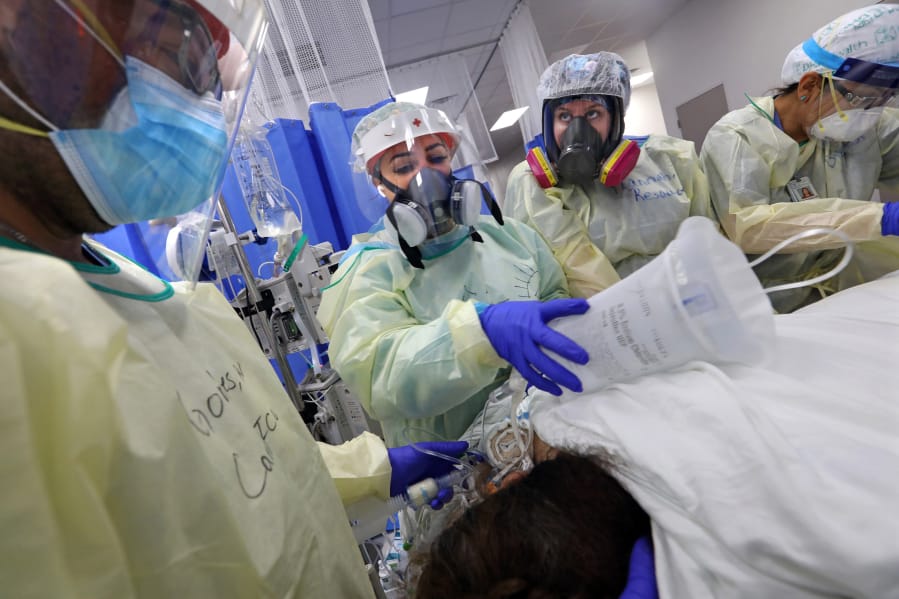EDINBURG, Texas — Crisis nurse Catrina Rugar was in full protective gear, checking a ventilated patient at a new COVID-19 unit in Texas’ Rio Grande Valley, when a doctor stopped to ask how old the man was: 40.
“They keep getting younger,” said Rugar.
Doctor and nurse bemoaned how people in Florida and Texas were ignoring pandemic restrictions.
“No one’s seeing us drown in patients,” Rugar said.
Rugar is part of an army of thousands of nurses and other medical staff, including some from Southern California, who were deployed first to New York City at the start of the pandemic, then to South Texas this month to battle the virus. Contracted by staffing agencies that set up temporary offices in Rio Grande Valley hotels, registered nurses are paid $95 an hour ($142 an hour for overtime) plus travel expenses to work 12-hour shifts, seven days a week for months at a time (nurse practitioner jobs pay more).
“You thought NYC was the biggest activation in American history with 4,500 medical professionals? So did we,” the Krucial Staffing agency said in a job posting on Facebook last week seeking nurses and other medical staff. “Our operations have moved to the great state of Texas. We are on track to eclipse that number.”
Charter buses and vans ferried nurses from valley hospitals to hotels this week, where staff placed “Healthcare heroes” signs on their doors, thank you banners in lobbies and ear plugs at the front desks for those on night shift. At morning and evening shift change, nurses in scrubs and pink respirator masks arrived in groups. Some asked hotel staff for trash bags to carry their soiled scrubs; others for deliveries. Some had ordered protective equipment such as gas masks in advance, unsure what conditions they would face in COVID units. Hotel halls were lined with their clogs and sneakers, which they left outside to avoid contaminating their rooms.



